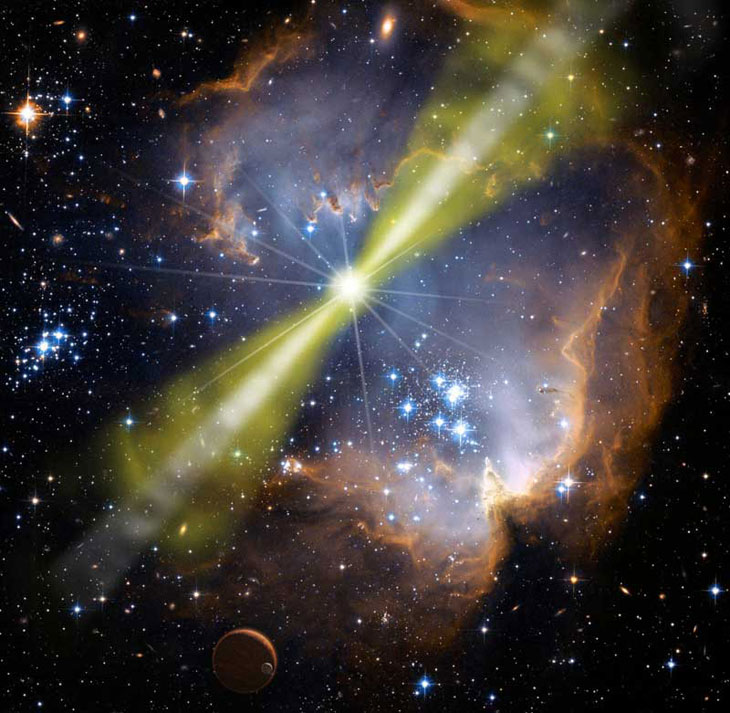
Chinese scientists believe they have identified a gigantic explosion in the distant Universe. If this holds true, it would be the oldest known gamma-ray burst, occurring around 400 million years after the Big Bang.
A galaxy located 32 billion light years from Earth
While Linhua Jiang and his colleagues fromPeking University were using theKeck observatory (Hawaii) to study GN-z11, the weakest and oldest known galaxy of theUniverse, it became hundreds of times brighter for just under 3 minutes. According to the researchers, whose observations were detailed in the review Nature Astronomy, it would probably be a gamma-ray burst, type of event previously observed in other galaxies, occurring when certain giant stars explode in supernova.
We see GN-z11 as it was 13.4 billion years ago, which means it was one of the first galaxies to form after the big Bang. However, due to theexpansion ofUniverse, the latter is about 32 billion light years from Earth. A phenomenon that also had the effect of lengthening the duration of the event observed by Chinese researchers, which would probably have lasted only about twenty seconds.
Previously, the most distant gamma-ray explosion on record occurred some 500 million years after the big Bang, i.e. 100 million after the event that probably occurred within GN-z11. Which would make the latter the oldest ever observed, and suggests that the first galaxies of theUniverse were much more active than scientists hitherto estimated.

Surprising observations
” The probability of detecting a burst of gamma rays in a particular galaxy is close to zero “, highlighted Jiang. ” If you observed one for a million years, you will probably only identify a handful of these bursts. This is why our observations turn out to be so surprising. “
Although it is unlikely that the signal from a satellite or a celestial object (asteroid) is responsible for the explosion of luminosity observed by the researchers, they recall that there is unfortunately no way to completely rule out this possibility, since the event has passed.
However, the study authors believe that the luminosity recorded during the event and its duration would correspond more to that of a gamma-ray burst, which was probably more common than expected at that distant time. ” Either we were very lucky or the gamma-ray burst rate was higher than we expected », Concludes Jiang.

